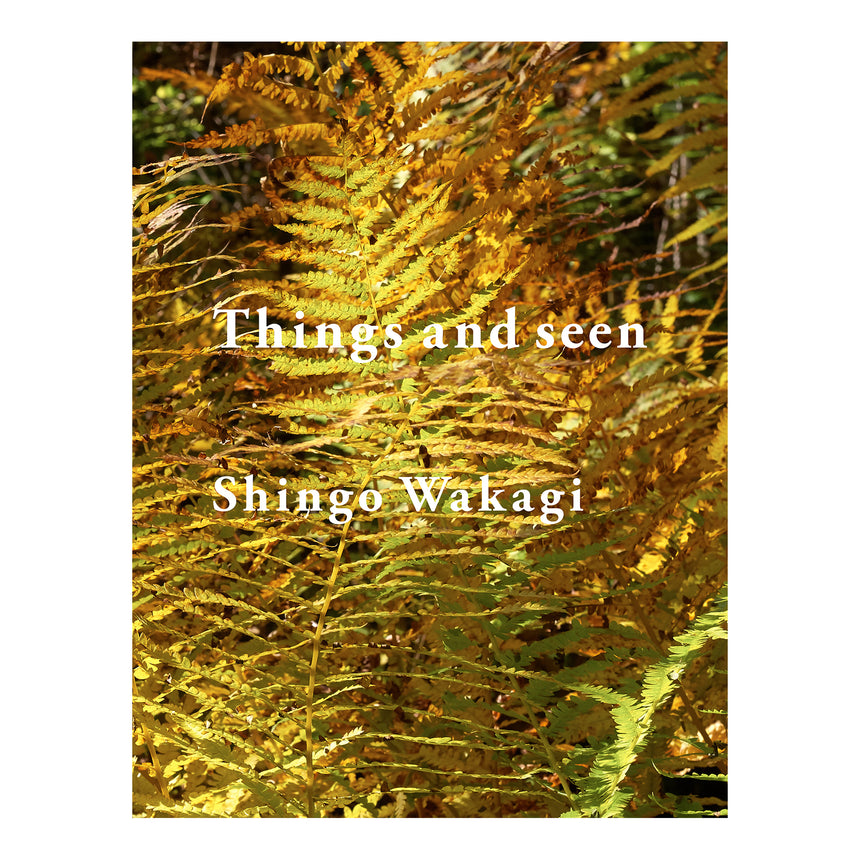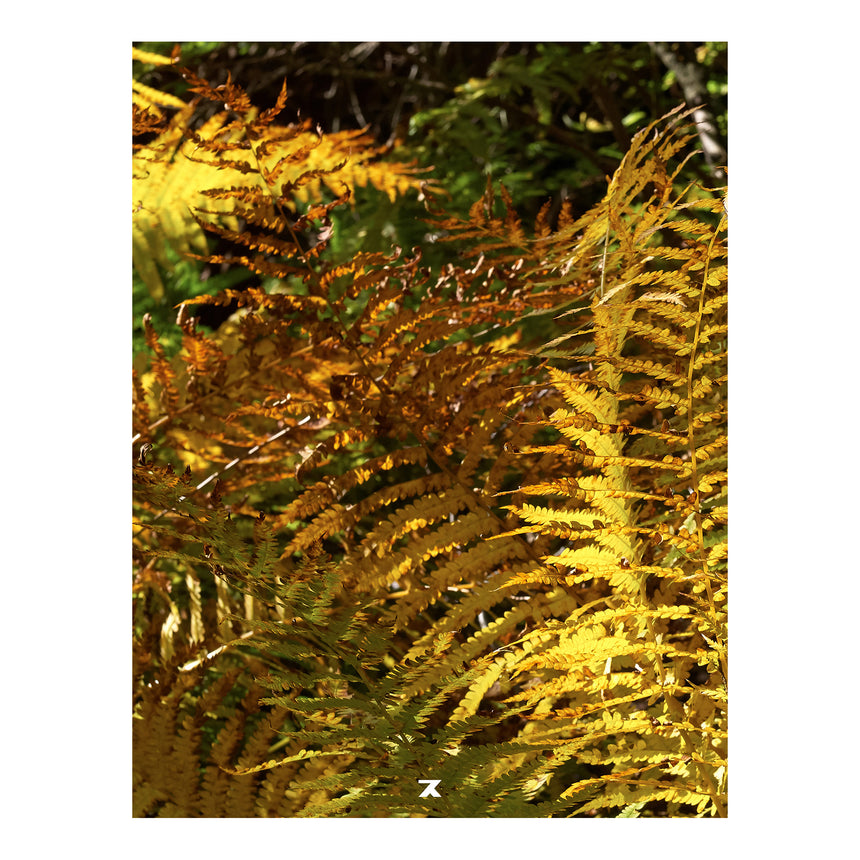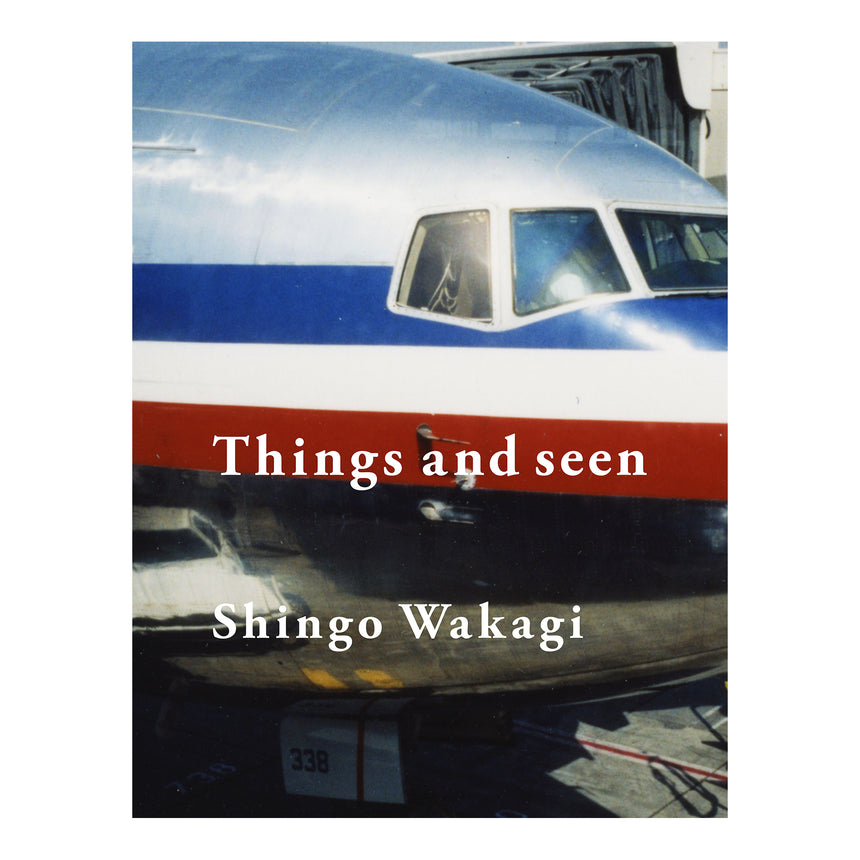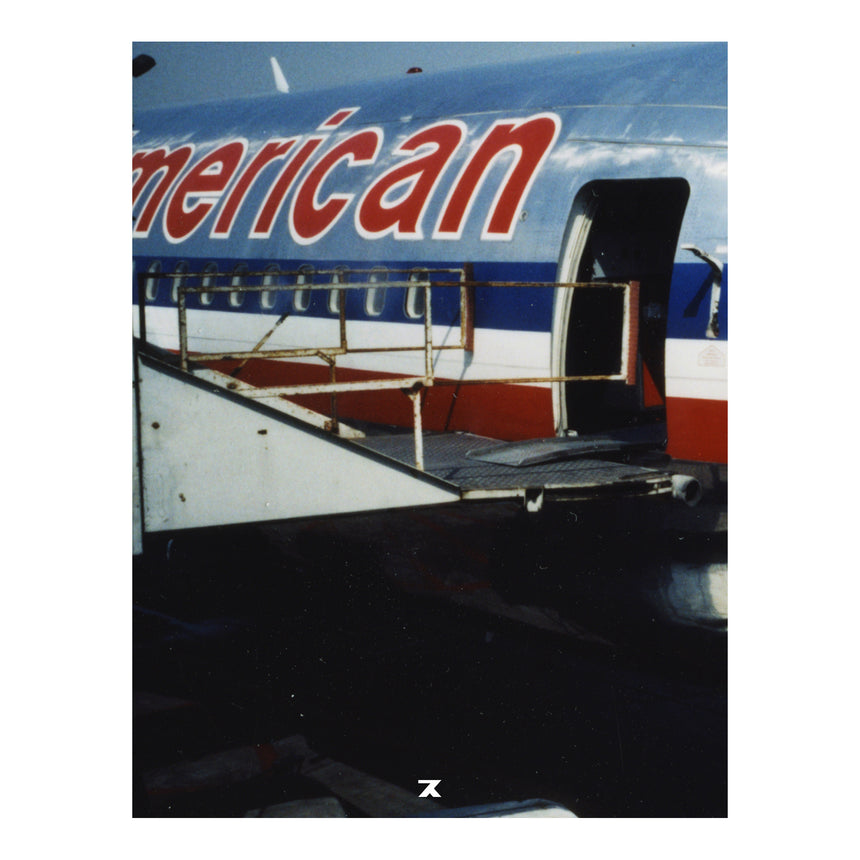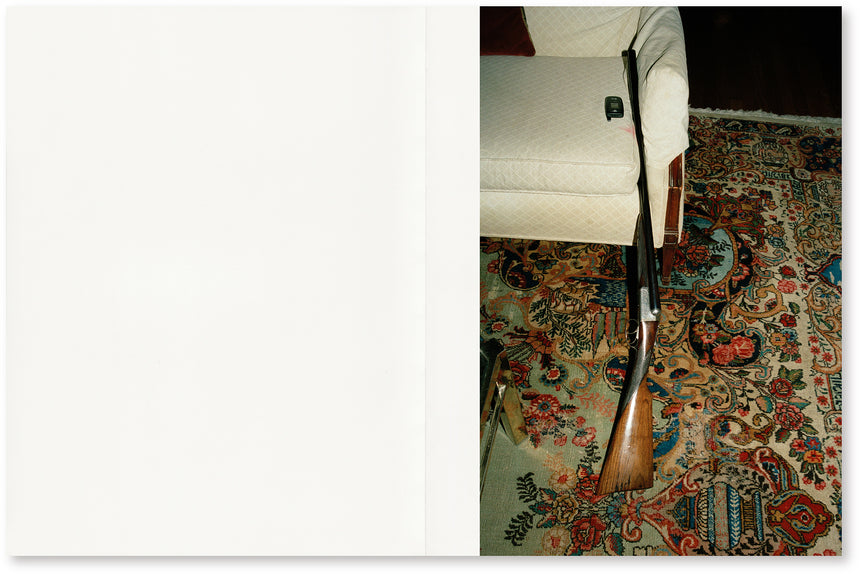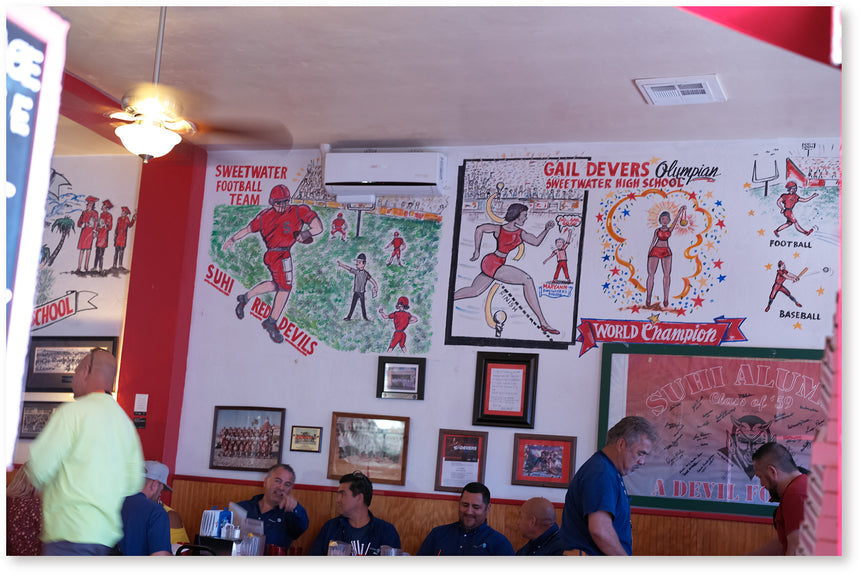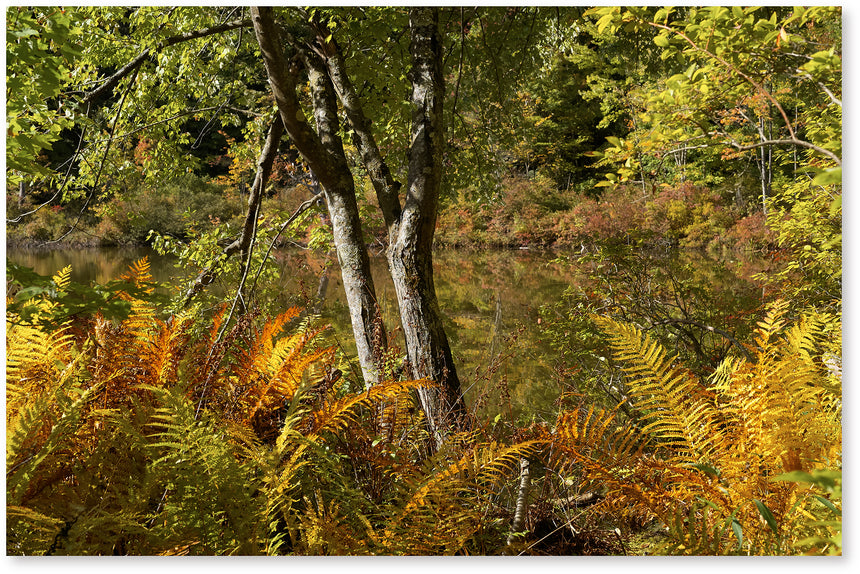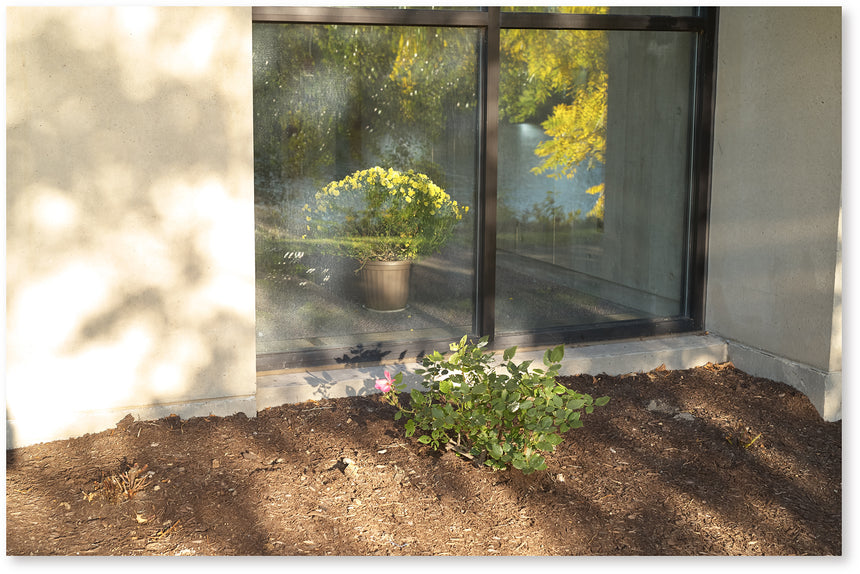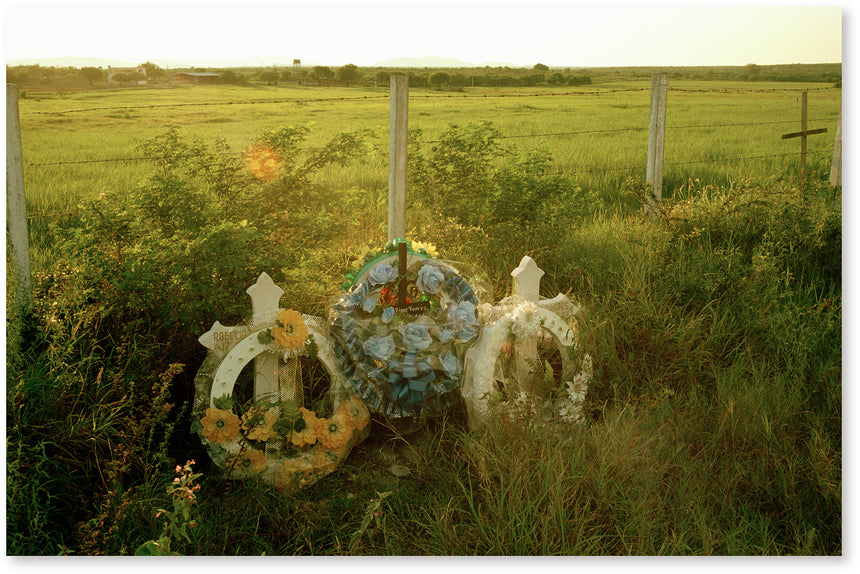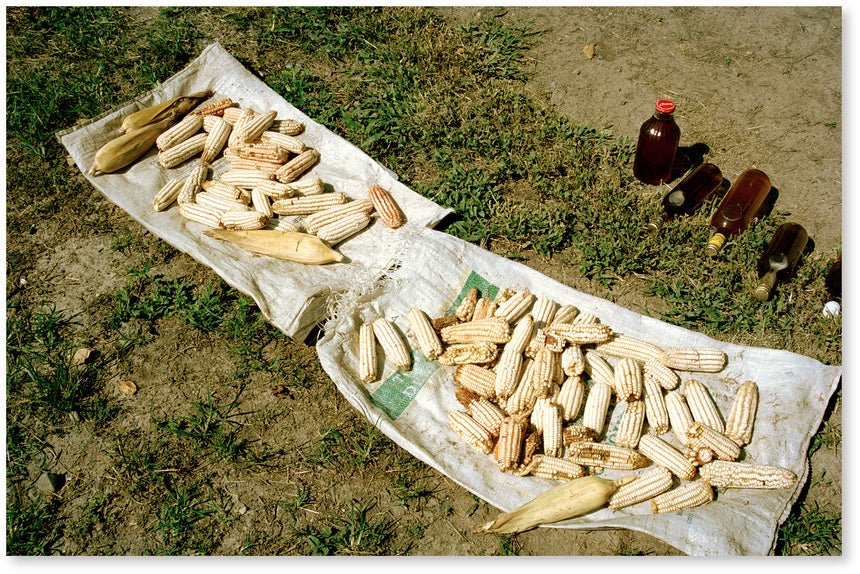Things and seen
Shingo Wakagi
(若木信吾)
¥4,300 JPY
“Mono no aware” The ephemeral nature of beauty
People experience repeated encounters and partings on a journey. Lots of things have passed by. The things that have been overlooked in the city may have taken notice of the stranger. And right then, he pressed the shutter button as if he were to give a reply.
Mailboxes, flowers by the window, empty boxes stacked in shopping carts, rifles, a woman walking.
That feeling and the mood expressed toward the item. The whereabouts of the item whose picture was taken is cut off from the owner and becomes a single photograph, passed into his hand. Did he succeed in making the item his own?
The window of a barber shop, the morning haze, a corolla on the roadside, corn, a traffic accident ...
But things are not that simple. The items you thought you brought back had something else imprinted on it. Each of those becomes a mirror, reflecting the shadow of his heart. In other words, "the ephemeral nature of beauty."
The people from about 1,000 years ago while traveling wrote songs about their feelings in response to what they saw, heard, and felt. And this photo book seems like a collection of poetry to me. What is even more interesting is that there is a bit of a different attitude apparent here compared to photographing the extraordinary excitement of traveling.
"He is he, but not he. But whether he wants to or not, he is he."
It may be a world where only those who live outside of their daily lives, in time of freedom such as traveling, may be able to feel. The only way to establish a relationship with something unrelated to you when visiting a place that has no regional bond or blood relation, is to present yourself. Almost to the point of blending in to the attitude of liberation. The "thing" captured in this way begins to tell, and the "story" ceases to be of a personal experience and begins to lean towards universal affection.
"Things & seen" —he saw them. And he was being watched. His own story thrown light on by things.
Chinatsu Shimizu (independent curator)
W21.3 x h28 cm
40 Pages
23 Images(color)
Soft cover(hand-sewn)
Full color Offset
Limited edition of 800
Published in 2020
ISBN 978-4-908512-91-9
*There are 2 different front cover
もののあはれ
旅で人は、出会いと別れを繰り返し経験する。自分の前を通り過ぎていった、たくさんの事物。外からやってくる者に、その街で見過ごされていた物が、まばたきをしたのかもしれない。そこで、彼もまばたきを返すようにシャッターを切った。
郵便受け、窓際の花、カートに積まれた空箱、ライフル、歩く女……
対象にむかって動く感情や気分。シャッターを切られた物の所在は、持ち主から切り離され、一枚の写真となり彼の手に渡った。彼は、泥棒に成功したのか?
理髪店の窓、朝靄、ロードサイドの花冠、トウモロコシ、交通事故……
しかし物事はそんなに単純ではない。なぜなら、持ち帰ったと思った物たちには、別のなにかが刻印されていたからだ。その物たちは、鏡となり、彼の心の影を映し出す。すなわち「物の哀れ(もののあはれ)」を。
約1000年前の人々は旅をしながら、見聞きし触れたものに対する心の動きを歌に詠んだ。そしてこの写真集もまた、歌集のようだとわたしの目には映る。さらに興味深いのは、旅という非日常の興奮を撮るのともまたすこし違った姿勢がここにあらわれていることだ。
「彼であって、彼ではない。しかし、否応なく彼である」
それは、日常の外、旅という宙づりの時間を生きる者だけが感受することのできる世界なのかもしれない。訪れた場所に、なんの地縁も血縁もないとき、自分とは無関係の事物との関係を結ぶには、自分をそこへ差し出すしかない。溶け出すような、解放に向かう姿勢。そうして撮られた「物」は語り出し、その「物語」は、個人の経験に留まることをやめ、普遍的な情趣へと傾きはじめる。
「Things and seen」―彼は、見た。そして見られていたのだ。物に照射された、彼自身の物語を。
清水チナツ(インディペンデント・キュレーター)
W21.3 x h28 cm
40 ページ
23 イメージ(カラー)
並製本(手綴じ)
カラーオフセット印刷
限定800部
Published in 2020
ISBN 978-4-908512-91-9
*表紙は2種類
